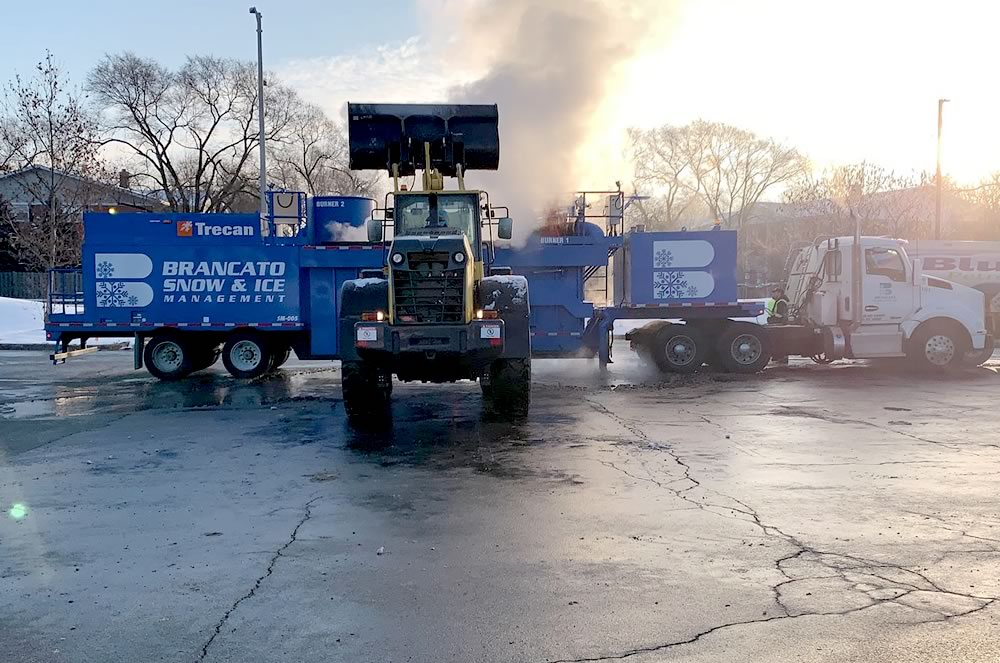The Evolution of Snow Removal in New York City
Snow removal has been a critical aspect of New York City’s infrastructure for centuries, ensuring the city’s functionality and safety during harsh winter weather. The history of snow removal in New York City is a testament to human ingenuity and technological advancements. In this post, we will explore the evolution of snow removal techniques in the city, from its humble beginnings to the modern methods employed today. Join us as we delve into the past and witness how “snow removal” transformed from a labor-intensive task to a sophisticated and efficient operation.
Early Days of Snow Removal
The early history of snow removal in New York City traces back to the 18th century when residents and shopkeepers were responsible for clearing snow from the sidewalks in front of their properties. This manual method, while practical for light snowfalls, proved inadequate during heavy storms, leading to blocked streets and impeding transportation. Until the late 1800s, there wasn’t a need for substantial snow removal.
As the city grew in size and population, the need for organized snow removal became evident. In 1811 the city census the population of the town was 75,000. New York City grew over 1000% in the fifty years before the Civil War. By 1880 the city had swollen to almost 2 million people! That tremendous growth over a relatively short amount of time created many difficulties, not the least of which was the problem of snow removal.
Horse-Drawn Plows
The arrival of the “Great White Hurricane” in March of 1888 brought the problem into a glaring spotlight. There were other infrastructure issues to be resolved, as well. But once those were addressed, the problem of how to get the snow off of the city streets had to be addressed. The 50-foot snowdrifts of that colossal storm were not quickly forgotten!
Horse-drawn plows had been introduced to tackle snow accumulation on the streets earlier in the century but were now fully embraced. These plows were more effective than manual labor but were still limited by the slow pace of horses and the narrow clearing path. Despite their limitations, the horse-drawn plows marked a significant step forward in the development of snow clearing methods.
The Advent of Snow Melting Machines
In the late 19th and early 20th centuries, New York City witnessed a surge in technological advancements, and snow removal was no exception. The city was already watching buildings across the island tower toward the sky and the network of elevated trains expand. Engineers were tasked with solving problems from sanitation to snow removal.
In the years after the 1888 storm, steam-powered snow-melting machines were introduced. These machines could transform snow into water, significantly reducing the need for manual labor and horse-drawn plows. This innovation allowed the city to handle larger snowfalls more efficiently. These improvements helped NYC residents to fare better through the storms, but the Big Apple needed more.
Motorized Snowplows and Spreaders
Another massive blizzard hit the city in 1899. This one dropped temperatures and snow from the Great Plains to Florida and then up the coast to New England. The city was buried by 16 inches of snow and the temperatures into the single digits. Three years later the Blizzard of 1902 cloaked the city in white, bringing it to a standstill. In 1920, another storm would dump another 17-20 inches of snow on the city. Residents demanded a change.
The 1920s saw the integration of motorized snowplows and spreaders, revolutionizing snow removal in New York City. These vehicles could clear larger areas of snow at a faster pace, enabling better accessibility and minimizing disruptions to daily life. Additionally, the introduction of salt spreaders allowed for faster ice and snow melting, further improving road conditions during winter.
The Blizzard of 1947 and Modernization
The Blizzard of 1947 was a turning point in the history of snow removal in New York City. The storm dumped over 25 inches of snow, paralyzing the city and exposing the shortcomings of the existing snow removal infrastructure. This storm caught the city as it straddled the turn-of-the-century world and the modern world. People still received milk at their homes and coal was delivered regularly. City folk were heavily reliant on supplies brought into town. The storm shut all of that down.
In response, the city invested heavily in modernizing its snow removal equipment and techniques, recognizing the importance of preparedness for severe weather events. Older vehicles were retired out and a fleet of new snow plows, large and small, were purchased. Salt spreaders were updated, as well. The increasingly modern city wouldn’t be humbled again due to a lack of tools.
Environmental Concerns and De-icing Technologies

As the environmental impact of traditional snow removal methods became apparent, New York City sought more sustainable approaches. Among other things, it was realized the effect of dumping snow from throughout the city into the rivers and harbors. In addition to causing flooding as the snow still on the ground melted, the ice flows disrupted the ecology of the rivers.
The 1970s witnessed the implementation of de-icing technologies that used environmentally friendly substances like calcium magnesium acetate (CMA) and liquid potassium acetate. These alternatives reduced the use of harmful chemicals and were less damaging to infrastructure and vegetation.
Technological Advancements in the 21st Century
The 21st century saw a rapid integration of advanced technologies in snow removal processes. Global Positioning System (GPS) technology became instrumental in tracking and coordinating snowplow fleets, optimizing routes for maximum efficiency. Additionally, remote sensing and weather forecasting tools provided real-time data to enhance preparedness and response during snow events.
With the advent of the internet and social media, New York City’s snow removal efforts became more transparent and interactive. City authorities launched online platforms and mobile apps to keep residents informed about snow emergency plans, plow routes, and snow removal progress. This engagement fostered a sense of community involvement and improved cooperation during winter storms.
The Past Gives Way to the Future
New York City faced new challenges due to the increasing frequency and intensity of winter storms attributed to climate change. The city adapted its snow removal strategies, incorporating climate projections to better prepare for extreme weather events. Innovative solutions, such as snow-melting infrastructure and improved drainage systems, have helped mitigate the impact of heavy snowfalls.
The history of snow removal in New York City is a tale of progress and adaptation. From the laborious manual efforts of the past to the technologically sophisticated methods employed today, the city’s resilience in the face of winter storms has been remarkable. As New York City continues to evolve, so will its snow removal strategies, ensuring that the city remains operational and safe during even the harshest winters. The journey from the past to the present demonstrates how “snow removal” has transformed into an efficient and essential service for this iconic metropolis.
Choose Brancato Today For Snow Removal
Brancato has been a part of the snow removal history of New York City and will continue to be! Our experienced and skilled crews are dedicated to providing you with the best service in the industry. Local and well-equipped, they will be your most powerful ally before, during, and after the storm! Contact us today for more information!


